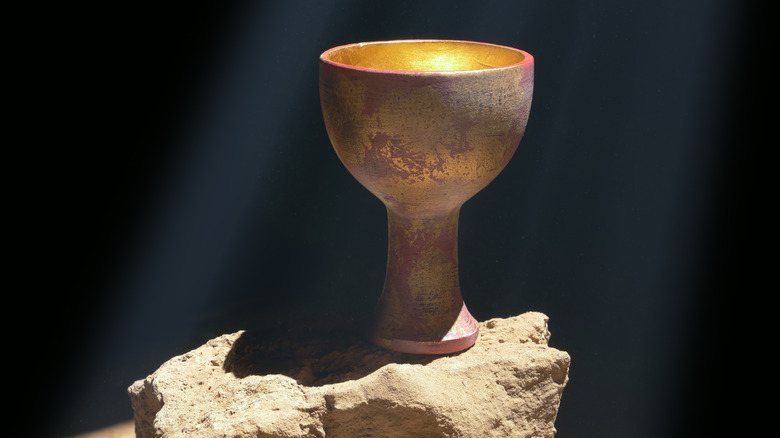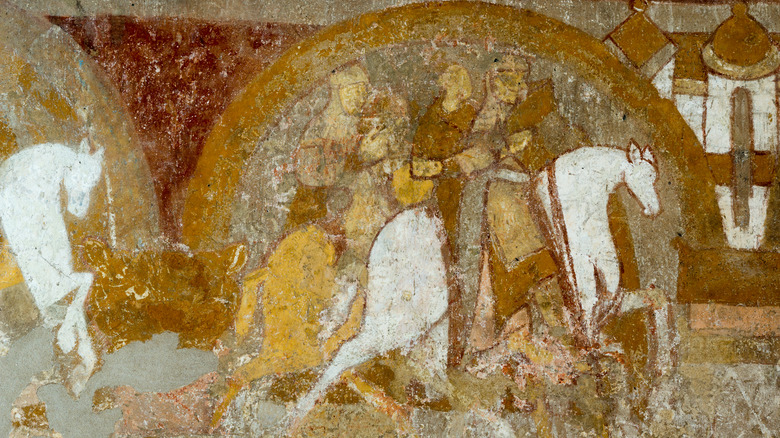Did The Holy Grail Really Exist?
Whether you know the legend of King Arthur and his Knights of the Round Table from classic literature like the French writer's Chrétien de Troyes' 12-century romance "Perceval, Conte del Graal" or the Victorian poet Alfred, Lord Tennyson's epic poem "Morte d'Arthur" (found at the Poetry Foundation) or, like the rest of us, you're more familiar with Monty Python's classic comedy movie featuring knights who quite rightly go "ni," you know that there is one thing that Arthurian knights prize among all else: The Holy Grail.
According to History, the fabled Grail — which also features memorably as the MacGuffin in "Indiana Jones and the Last Crusade" — is typically said to have been the drinking vessel Jesus used at the Last Supper, and later used to collect his blood at his crucifixion. If discovered, the cup had the power to change the world through its healing properties: it was considered a source of eternal youth and happiness, making it highly sought after by characters such as King Arthur, who believed it could bring joy to his land and unite Britain under his sovereignty.
Per the same source, it has also been suggested that the Holy Grail was brought to Glastonbury, England, by the Knights Templar, who plundered it from the Holy Land during the Crusades. According to this version of events, the mystical relic has been lost ever since. But what's the real story?
The Holy Grail: fact or fiction?
In 2014, reports emerged that posed an exciting question: "Is the quest for the Holy Grail over?" (via History). The prospect of such an unthinkable discovery was made public after Margarita Torres and José Miguel Ortega del Rio, a medievalist and art historian, respectively, announced via an academic paper their belief that they had unearthed the relic in the Basilica of San Isidoro in northern Spain. The researchers said that it was a chance discovery made while in the process of examining Islamic artifacts.
Per the same source, few historians have taken the announcement to heart. Though the cup in question has been dated to within a hundred years either side of the period in which Jesus Christ is believed to have existed, there is no way to verify the object has any real connection to the messiah. The source notes, too, that the Grail is afforded no significance in the canonical books of the Bible.
Instead, the Holy Grail is believed to have emerged in the mythical form by which it is known today in the 12th century, in the book in English, "Percival: The Story of the Grail." But according to History Answers, it was the Grail's next appearance, in the poet Robert de Boron's long romance recounting the life of Joseph of Arimathea, written around the turn of the 13th century, that the story of the Grail is expanded to suggest that it was the goblet used by Jesus at the Last Supper, and so assumed mystical significance.

